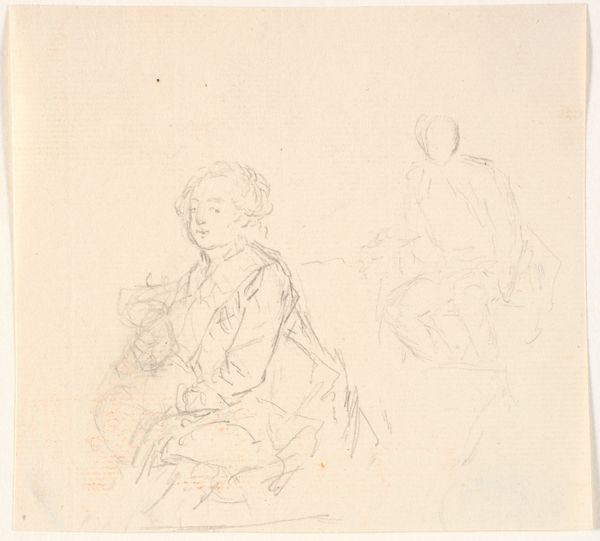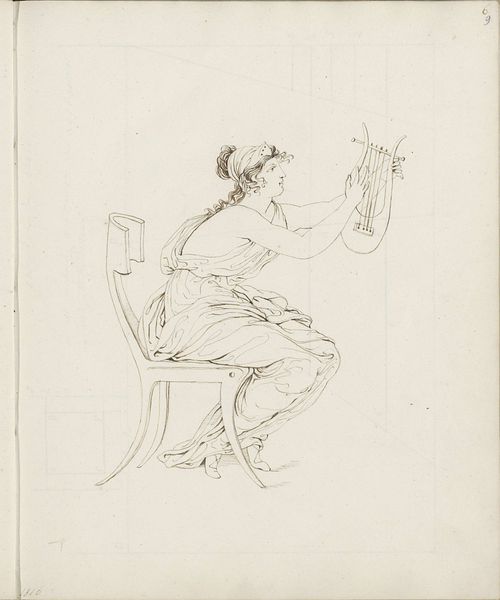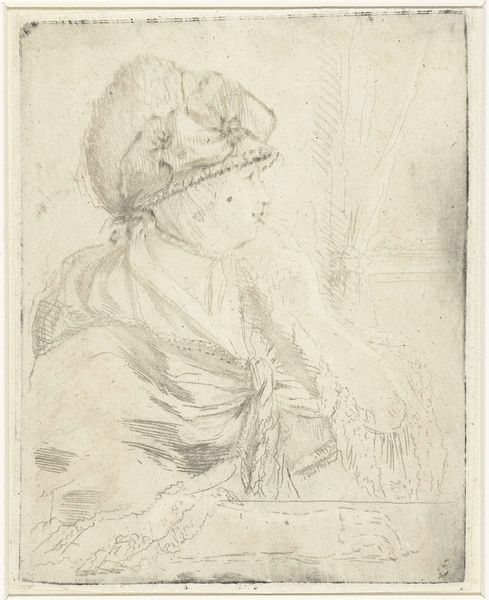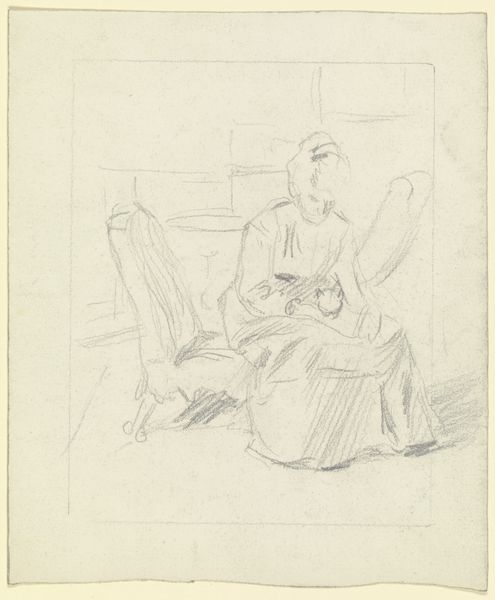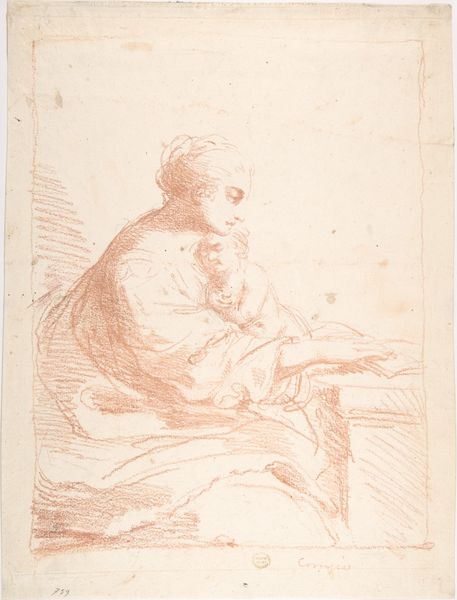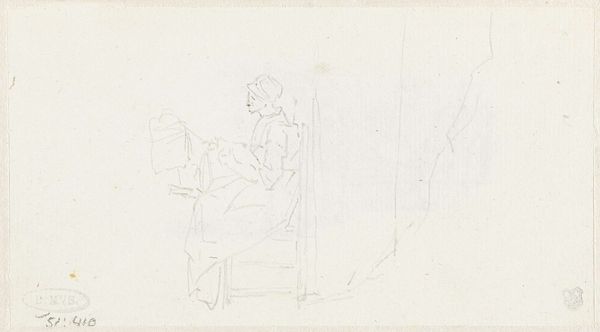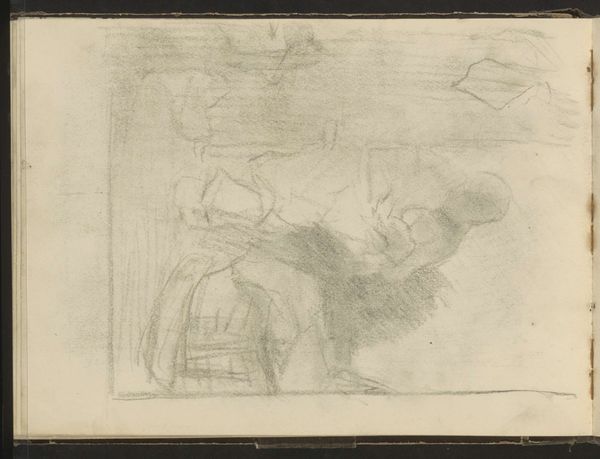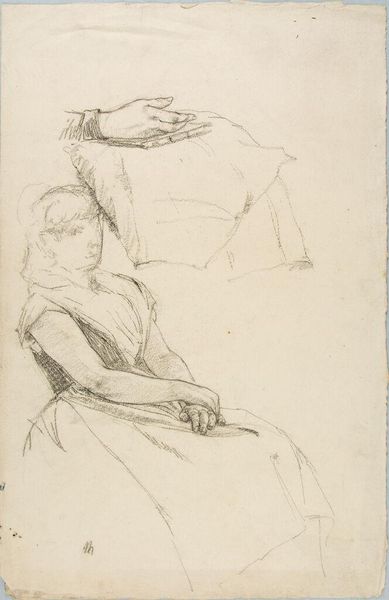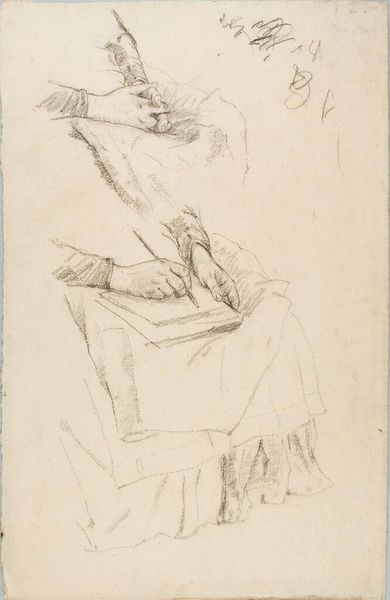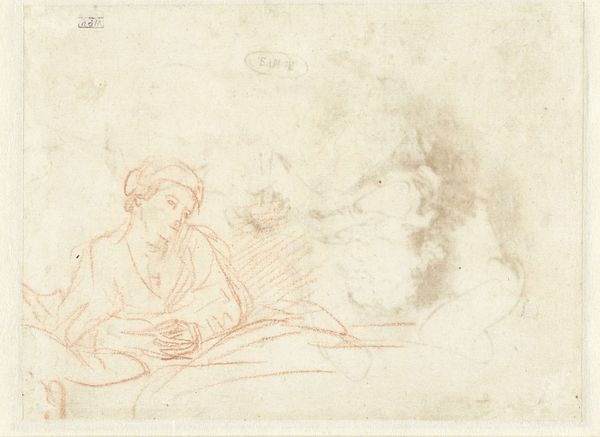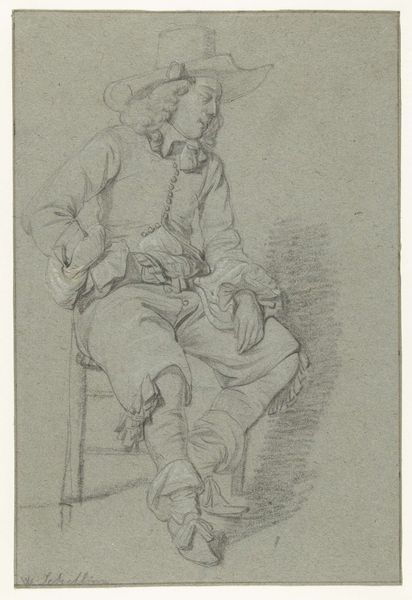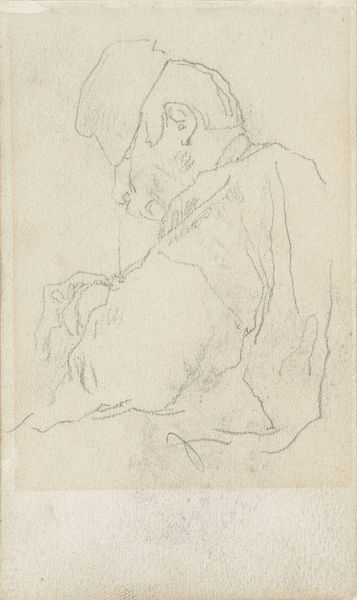
Vrouw zoekt naar vlooien in het haar van een jongen, van opzij c. 1653
0:00
0:00
drawing, pencil
#
portrait
#
drawing
#
dutch-golden-age
#
pencil sketch
#
figuration
#
pencil
#
pencil work
#
genre-painting
Dimensions: height 68 mm, width 102 mm
Copyright: Rijks Museum: Open Domain
Editor: This is a pencil drawing by Harmen ter Borch, dating back to 1653, titled "Vrouw zoekt naar vlooien in het haar van een jongen, van opzij". It looks like a candid snapshot. What can you tell me about its deeper significance? Curator: This drawing, on the surface, depicts a commonplace domestic scene. However, its power lies in what it reveals about 17th-century social structures. Who has the power in this image? Is it merely a caring gesture, or are there societal implications of class and domestic servitude embedded within the simple act of grooming? Editor: I hadn't thought about it like that, I assumed it was simply a mother and her child. Is there a significance to the artist's choice to focus on such an intimate scene? Curator: Exactly. Ter Borch was known for portraying everyday life with nuanced detail. Think about how these 'genre scenes' contribute to the broader narrative of the Dutch Golden Age. Whose stories were considered worthy of documentation, and whose were overlooked? Consider, also, the gender roles at play. Why this particular interaction between a woman and child? Editor: So you’re saying that the seemingly innocent nature of the drawing may mask deeper power dynamics and societal expectations? Curator: Precisely. Art often acts as a mirror reflecting, but also subtly reinforcing, the social norms of its time. Recognizing those dynamics is crucial. How do you think this drawing might resonate with contemporary discussions about care work and gender roles? Editor: I think I now appreciate how the art of the Dutch Golden Age isn't just about pretty pictures; it offers critical insights into a society's values. I am very grateful for these valuable insights! Curator: And I hope this conversation can prompt further discussions, and maybe activism, to continue questioning the accepted norms and hidden biases that art often subtly perpetuates.
Comments
No comments
Be the first to comment and join the conversation on the ultimate creative platform.
